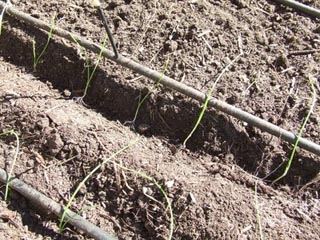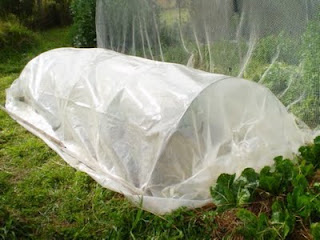 Write out one hundred times ‘I must not go on about the weather’. Well sorry, but bearing in mind my weather station has not recorded a temperature below 3degs C this winter I cannot but go on about the weather, particularly if you recall last winter! Brrr!
Write out one hundred times ‘I must not go on about the weather’. Well sorry, but bearing in mind my weather station has not recorded a temperature below 3degs C this winter I cannot but go on about the weather, particularly if you recall last winter! Brrr!
Fuchsias, hydrangeas, azaleas, camellias, daffodils, primroses and hellebores all in flower in my garden and a perennial geranium in full flow too! It’s all rather fascinating and I don’t recall it happening quite like this before, but this is the wonder of our seasons. Having just returned from a little trip to the Caribbean it does make me appreciate seasons – they have it easy really, but how dull. The only real challenge for them is a hurricane!
But we have had a lot of rain and if the soil is sodden and the grass squelching then it may tell you where you have drainage issues to attend to, but there is no point in working on the soil or grass as you will do more harm than good.
 If you missed the instruction to plant your sweet peas in November then there is stilltime to do them this month. I planted my seed in April last year and had flowers through to November so it is not always vital to follow the experts’ advice.
If you missed the instruction to plant your sweet peas in November then there is stilltime to do them this month. I planted my seed in April last year and had flowers through to November so it is not always vital to follow the experts’ advice.
It is also time to start petunias, busy lizzies and salvias if you can provide a little warmth indoors or in the greenhouse. Frankly I would have a season off the busy lizzies. They were so damaged by mildew last year many of the big growers have abandoned them until the seed and plants are disease free. Module sowing is perfect for tender annuals and can also be used for sowing seeds of onions and leeks in clusters. If you use 4cm cells then 5-7 seeds in each cell will push up quickly and, rather than thinning out, plant them in a clump and they will push each other apart to form reasonable sized veg. They won’t be thumping great prize winners but it’s a lot less effort and encourages those who don’t want the bother of ‘doing it properly.’
 You can do the same with carrots and plant those 15 cm apart. Very easy and encouraging for children. Of course if you want a thumping good prize winner you are far too late. One of the show winners was telling me last week his onion seed, (Kelsey of course, the huge ones) was sown in November.
You can do the same with carrots and plant those 15 cm apart. Very easy and encouraging for children. Of course if you want a thumping good prize winner you are far too late. One of the show winners was telling me last week his onion seed, (Kelsey of course, the huge ones) was sown in November.
Don’t be tempted to use last year’s seed compost. If it’s been stored outside all the goodness will be leached out and it may be sour. Use new compost that has been kept under cover by the supplier. Actually I use a multi purpose that has been made from recycled organic materials with very little peat and only from sustainable sources. Seed compost inevitably has heavy peat base and if it is a peat free one make sure you add vermiculite to aid drainage.
So, get too it, the year is well underway and here are some jobs for the month:-
If you can find a fairly dormant perennial take root cutting. Dig up the plant to be propagated or cut a portion from one side. Wash the soil from the roots. Cut off good roots and trim into sections of about 5cm. Cut off small fibrous roots from the sides and cut the bottom diagonally and the top straight so you know which way up to put them. Put into a gritty mix in a pot with the top just covered and keep cool but frost free. This method can be used for crambe, Japanese anemones, nepeta, oriental poppies and verbascum to name a few.
 Plant tomato seeds this month with a little warmth to get them going. Cherry tomatoes were £7 per kilo last summer, in season. You could supply an entire neighbourhood with that amount spent on seed!
Plant tomato seeds this month with a little warmth to get them going. Cherry tomatoes were £7 per kilo last summer, in season. You could supply an entire neighbourhood with that amount spent on seed!
Alpines are best sown in Jan /Feb; you will still get away with it if done early inthe month. Spread seed on a damp, gritty compost and cover with glass to keep the rain off. Leave outside to replicate their alpine home, keeping them cold for a few weeks before the spring warmth allows growth.
You should have your early potato tubers now, if not go buy some quickly. Rub off all but the best two shoots on the rose (most prolific end), put in an egg tray in a cool but frost free room to bring on the early shoots before planting.
Plant out hardy broad bean plants.
 Usually until end March you can but bare root plants for hedging, and trees, as I have mentioned before. They are much cheaper than container grown plants. If this is something you are contemplating then I really wouldn’t delay. This season has been tough for growers, the whole point is to lift the plants whilst they are dormant and many of them just haven’t gone dormant. Lifting has therefore been later and the season for bare root looks like being shorter.
Usually until end March you can but bare root plants for hedging, and trees, as I have mentioned before. They are much cheaper than container grown plants. If this is something you are contemplating then I really wouldn’t delay. This season has been tough for growers, the whole point is to lift the plants whilst they are dormant and many of them just haven’t gone dormant. Lifting has therefore been later and the season for bare root looks like being shorter.
Stake new trees and check that existing stakes are firm and not damaging the bark as the tree moves on a blustery day.
Start sowing veg seed for plants to plant out end February. Early caulis and cabbage, like Hispi, can be sown now and also early lettuce like Little Gem which doesn’t need a lot of heat.
If it’s really wet, cover a bit of ground in the veg plot with cloches or polythene sheet which will keep the soil drier and warmer.
Keep up with the weeding if the soil is not too wet, it will pay dividends later as all last year’s weed seeds are germinating well now.
If you really want to go for it with seed sowing and have some warmth to give, then just look at the back of the seed packet, it will tell you when to plant seeds and how, either undercover or directly into the ground. I could do with a pound for everyone who says ‘I want to grow veg but don’t know when to sow’.
Finally do not be complacent. February can be the worst month of the year for weather. We may yet see hard frost or prolific snow (cheerful aren’t I!). The new buds on magnolias and rhododendrons could be damaged and the new growth on perennials stopped very quickly. Lawns cut too short will be checked. This could delay spring growth quite severely as all the plants seem to think we are nearly there. I am not a pessimist but a realist and I am really quite excited to know what the weather may bring this month!
